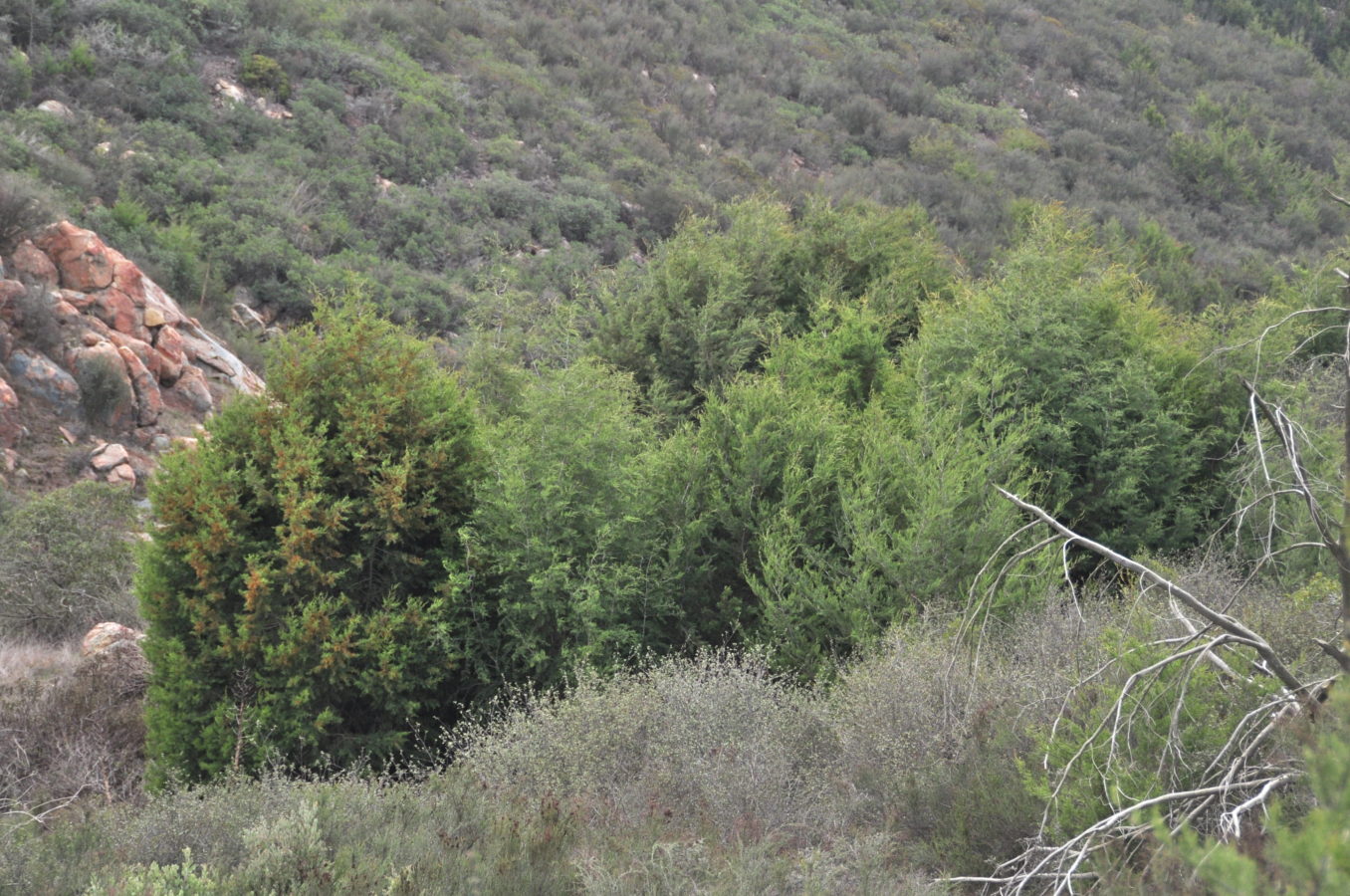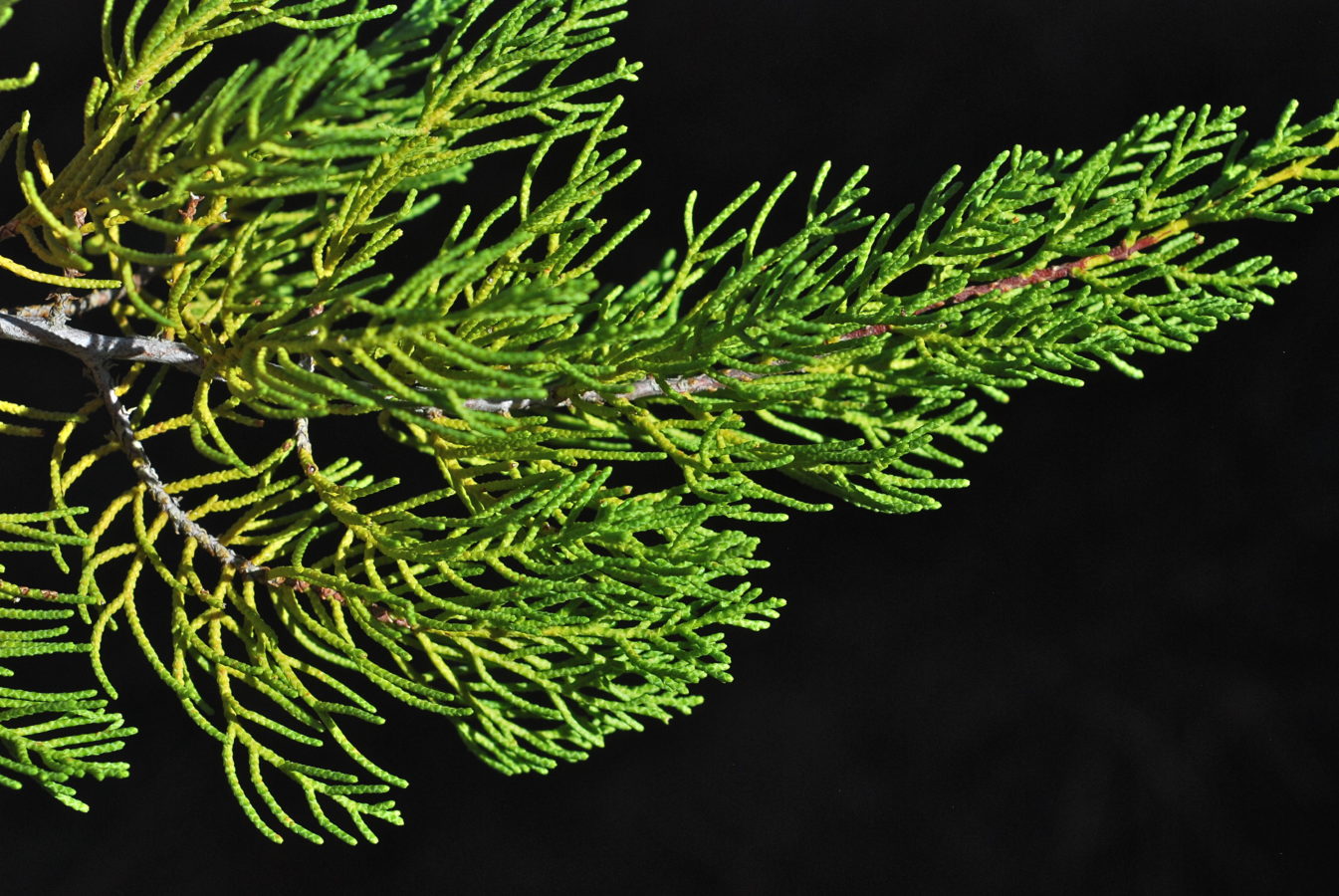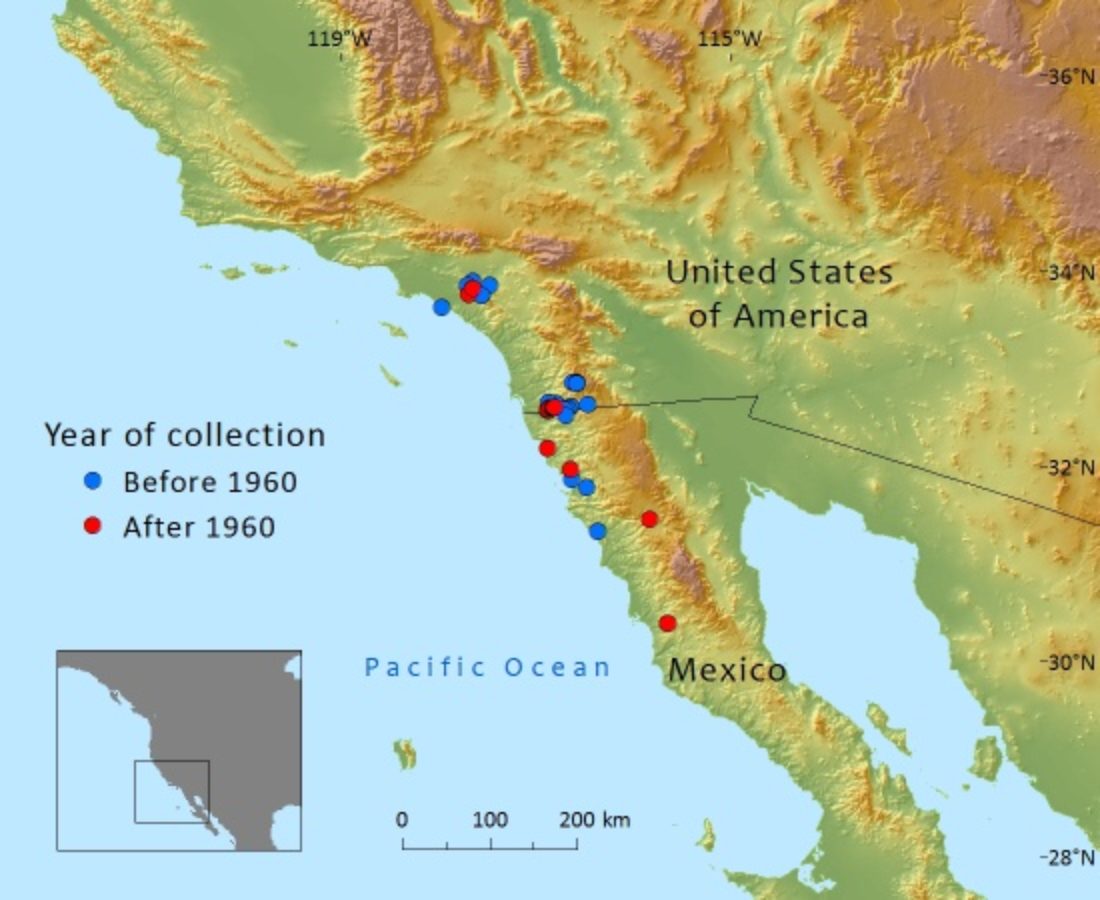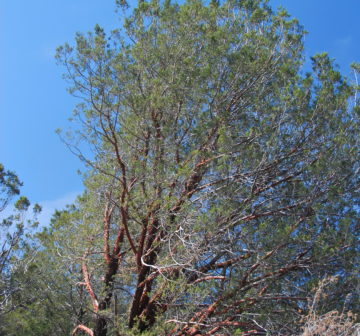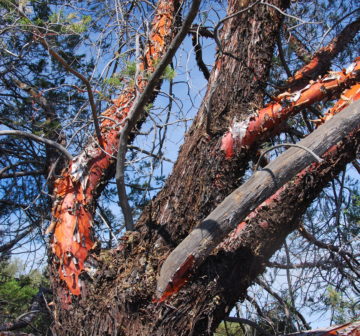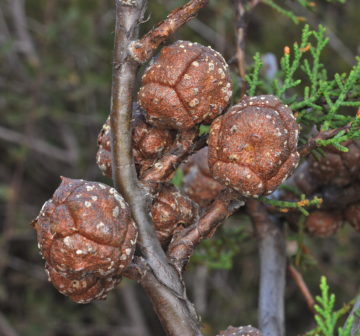Conservation Status
Global status
Endangered B2ab(ii,iii,iv,v)c(iv)
Global rationale
Recent figures of population size and continuous decline are known from at least two of five subpopulations in California (there are scattered occurrences across the border in Mexico, of which little is known). However, the total population size is not known but must exceed 10,000 mature or adult trees. The area of occupancy (AOO) has been calculated using the herbarium data collected from all Californian and two Mexican subpopulations: this is at most 32km² and probably less, and decreasing along with the number of mature trees. The fire frequency exceeds the requirements of a sustainable population. This taxon therefore meets the B2 criterion for Endangered.
Global threats
Tecate Cypress has a restricted distribution in San Diego County and one disjunct subpopulation in Orange County, which was the earliest one known to botanists (Griffin & Critchfield, 1972). The largest subpopulation is on Otay Mountain close to the Mexican border; individuals are known from the Mexican side as well (Epling & Robinson, 1940; see also R. F. Thorne 62688, E, RSA and personal observation by the author in October 1992). These latter trees were very close to the (then) new highway from Tecate to Mexicali. Urbanization in the region has brought an increased risk of wildfires and the prevention as well as the attempts to put these down or restrict them will be concentrated around urban properties, not in the first place populations of rare trees. Like its congeners in California, this cypress will regenerate after fire but there is a definite risk to survival if frequency or intensity of fires are increasing due to human impact factors. There have been six major fires in one subpopulation (Santa Ana Mts., Orange County) during the last 95 years; this subpopulation had 3800 adult trees in 2009 (Rodriguez-Buritica et al., 2010). There has been a significant population reduction in the last two decades, due to increased frequency of fires. It has been estimated that the population will continue to decline when major fires occur at intervals shorter than 35 years, which has been the case at least in this subpopulation. As a result, it is now severely fragmented, with many adult trees ‘hidden’ in ravines (refugia from fires) and isolated from other such stands. The greater majority of plants are seedlings and small saplings, which would not contribute to the perpetuation of the (sub)population if another major fire occurred in the next 20–30 years. A subpopulation in the Coal Canyon Reserve burnt almost completely in 2010; here most trees had not grown sufficiently large since the previous fire to produce large crops of cones needed to provide enough seedlings to replace the trees killed. There is not much time for this, and with more frequent fires this subpopulation will in the longer term turn into chaparral.

